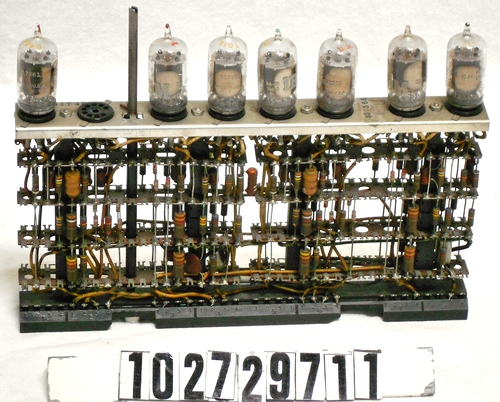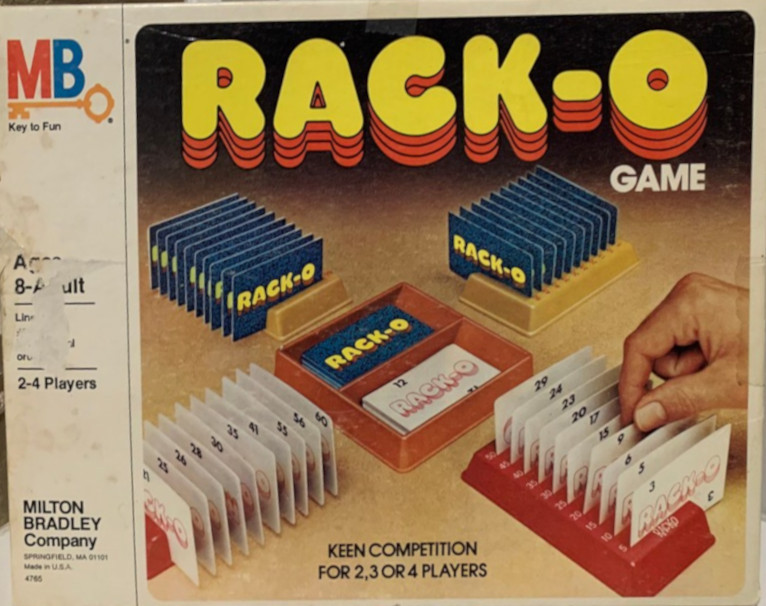TL;DR: It was cardboard and equal sized at first
'Boards' of various size and style are a later development.
I'm curious about the historical origin of the use of the word "card" in "expansion card."
Asking for a 'why' when it's about language is rarely useful. Still, in this case it can be said that "card" existed even before it was used for expansions :))
"Expansion board" makes sense, given it's a PCB, and a PCB is a board (of fibreglass for example).
Well except that early cards were not PCBs, as the first generation didn't carry any circuit, especially not a 'printed' one, nor were they fiberglass, but made of resin soaked paper.
PCBs as we know today underwent a long development. Electronics started with frames mounting components connected by wires and other components, called point-to-point, a technology taken from previous radio design, as seen here:

(Taken from Wikipedia)
Early computers were built the same way except, due to their repetitive nature, a more structured modular approach was possible. See this IBM Module used in 700 series mainframes in the 1950s:

(Taken from this CHM page)
There is nothing even close to a PCB here. As early as the 1920s the first radio equipment manufacturers started using early forms of circuit board made from resin-soaked and pressed paper. But those boards did not feature any traces, nor any other components - only holes to hold wired components. This use solved a major problem of point-to-point wiring by keeping wires and components apart from each other by a non-conductive carrier.
The first circuit board with wires embedded showed up as early as the 1900s (even Edison tried to build some). They were ahead of their time: there was no real need, as the few components that made up a radio or similar did do well without. In areas where complexity and density were required, there was some limited use. Even some multilayer boards were used by German manufacturers during the war. Neither were of much influence for early computing (*1)
In radios, PCBs started to appear in Europe during the late 1930s/early 40s, while the US still held the technology a war secret until 1949, somewhat slowing development. It wasn't until the mid 1950s that the first PCBs were used in computers. Although DEC's flip-chip modules are not amongst the earliest examples, they may be the best-known ones:

(Taken from Wikipedia)
Since they were targeted at a low price point, they show many features of earlier boards (and quite low density). From there to today's 20+ layer and 50µm trace size was still a very long way.
But "card" seems a bit esoteric. Did this terminology originate from the physical resemblance to punch cards, index cards, or something else - possibly simply the fact they're rectangular and most type of cards are too!?
Rather from simply being just cards made of paper. There's no need to borrow any meaning from other media.
- Early machines were built from cards of equal size connected not by a 'motherboard' but wired backplane.
- The next step after wired backplanes was bus systems using PCBs. (*2)
- Motherboards only came after that with smaller, rather desktop style machines. (*3)
In fact it's, pretty much the reverse of your assumption: being called 'board' is a result of distinguishing them, as the main unit, from cards, which are parts thereof.
*1 - One notable intermediate step for complex boards, used especially on the Allied side, were boards holding riveted rows of solder points. Its use in several US products of the late 1940s was due to the fact that the US considered PCBs a war secret, and only released in 1949.

(Taken from Wikipedia)
*2 - Thin S100 or ECB.
*3 - The notable difference between motherboards and earlier incarnations of backplanes is that a motherboard contains active components, often quite expensive ones like CPU, Memory and/or basic I/O. Back in the early days no one would have put either on a fixed layer burrowed under everything else. Not just because of the size needed, but also as cost in case of failure would have killed any company, regardless of size. It only became a thing when most components of a machine became small enough to fit on a single reasonable-sized board.




